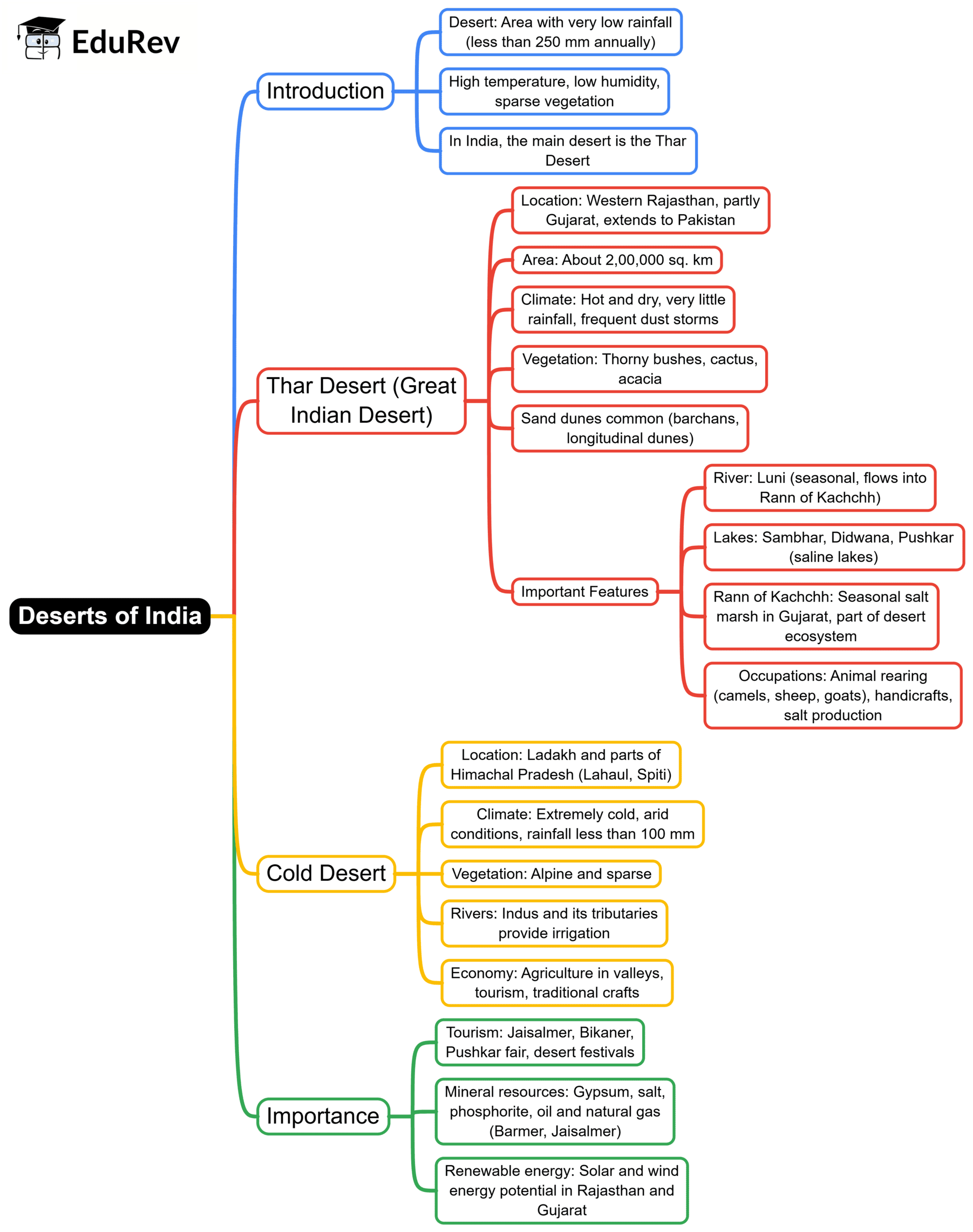SSC CGL Exam > SSC CGL Notes > General Awareness for SSC CGL > Mind Map: Deserts
Mind Map: Deserts | General Awareness for SSC CGL PDF Download

The document Mind Map: Deserts | General Awareness for SSC CGL is a part of the SSC CGL Course General Awareness for SSC CGL.
All you need of SSC CGL at this link: SSC CGL
|
528 videos|2113 docs|339 tests
|
FAQs on Mind Map: Deserts - General Awareness for SSC CGL
| 1. What are the main characteristics of deserts? |  |
Ans. Deserts are defined by their arid conditions, receiving less than 250 mm of rainfall annually. They often have extreme temperature variations, with hot deserts experiencing high daytime temperatures and cooler nights, while cold deserts can have freezing temperatures. Desert landscapes are typically characterized by sparse vegetation, sand dunes, rocky terrain, and unique wildlife adapted to survive in harsh conditions.
| 2. How do deserts form? |  |
Ans. Deserts can form through various processes, including the rain shadow effect, where mountains block moisture-laden winds, leading to dry conditions on one side. Other factors include high-pressure systems that inhibit cloud formation, as well as the geographical location of deserts, often found at 30 degrees latitude where descending air creates dry conditions. Additionally, human activities like deforestation and overgrazing can contribute to desertification.
| 3. What types of deserts exist and how do they differ? |  |
Ans. There are several types of deserts, including hot deserts (like the Sahara), cold deserts (like the Gobi), coastal deserts (like the Atacama), and semi-arid deserts. Hot deserts are characterized by high temperatures and minimal rainfall, while cold deserts experience colder temperatures and can receive some snowfall. Coastal deserts have unique ecosystems influenced by proximity to oceans, and semi-arid deserts have slightly more rainfall and support more vegetation than true deserts.
| 4. What adaptations do plants and animals have in desert environments? |  |
Ans. Plants in deserts often have adaptations such as deep root systems to access underground water, thick skin or waxy coatings to reduce water loss, and the ability to store water. Animals may be nocturnal to avoid daytime heat, possess specialized kidneys to conserve water, and have physical features like light coloration to reflect sunlight. These adaptations enable survival in extreme and variable conditions.
| 5. How do deserts impact human activities and cultures? |  |
Ans. Deserts can pose challenges for human settlement and agriculture due to their harsh conditions. However, they also provide opportunities for tourism and resource extraction, such as minerals and fossil fuels. Many desert cultures have developed unique lifestyles, relying on traditional knowledge and practices suited to their environment. Water management and sustainable practices are critical for balancing human needs with desert conservation.
Related Searches















